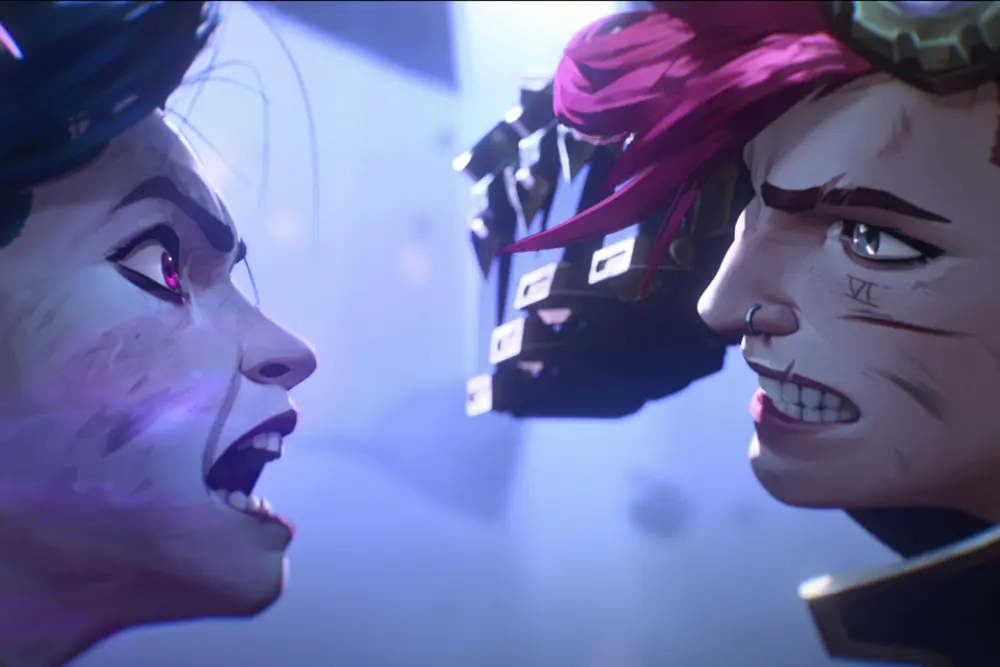Arcane creator delves into political divides in season 2
A deeper look into the duality of Piltover and Zaun
Christian Linke, the mastermind behind Netflix’s acclaimed animated series Arcane, has revealed that the inspiration for Season 2 stems from the divisive U.S. two-party political system. Linke points to the inability of these parties to effectively communicate with each other, a theme that mirrors the high-stakes tension between the utopian city of Piltover and the oppressive underworld of Zaun.
In the mythos of Arcane, the residents of Piltover live in opulence, blind to the struggles of the oppressed Zaunites. The stark contrast between the world above and the wasteland below fuels conflict and resentment, echoing real-world social and political divides. As Season 2 unfolds, this volatile mix is set to erupt into total war, driven by the characters’ desperate attempts to bridge their worlds or at least maintain a fragile peace.
Political allegory within fantastical realms
At the Los Angeles premiere of the second season, when asked about the real-world inspirations behind the show’s narrative, Linke didn’t shy away from the parallels. “If you’re asking me whether we were inspired by two sides of one nation who are incapable of even talking to each other anymore at a certain point, yes,” he noted, emphasizing the increasing polarization observed in society.
Linke further elaborated on how the contentious political climate, particularly during election seasons, exacerbates these divides. “When we started this, it was like, ‘Yeah, there’s a certain inability to co-exist.’ But, I mean, you know, the election isn’t far away. And it’s only gotten worse.”
Reflecting contemporary issues through storytelling
Amanda Overton, one of the writers for Arcane, shared her perspective on embedding contemporary issues into the plot. “We were always feeling this sort of widening wealth gap and the left-right divide just in our lifetimes, and it felt like we could explore these themes in a really inspiring and imaginative way.”
The idea of using animated storytelling to address real-world problems is not only imaginative but also a powerful method of engaging diverse audiences. By cloaking modern political tension in a fantasy narrative, Arcane allows viewers to explore these themes without the immediate defensiveness often triggered by direct political discourse.
Arcane’s meteoric rise and anticipation for season 2
The League of Legends-inspired series launched on Netflix in 2021, quickly catapulting to the number one spot in 52 countries. This success is a testament to the show’s intricate storytelling, stunning animation, and deep character development—all of which resonate with a global audience.
Season 2 premiere dates and format
Fans of Arcane won’t have to wait much longer. The first of the three parts of the second and final season will debut on November 9. Each subsequent part will follow weekly, with the second part available on November 16 and the finale on November 23. This staggered release strategy is likely to keep viewers engaged and build anticipation week after week.
Visual storytelling unleashed
One of the show’s most commendable aspects is its visual storytelling. The animation style is not just appealing but also functions as a critical storytelling tool. The contrast between Piltover’s glittering skyscrapers and Zaun’s dark, industrial landscape visually represents the socioeconomic divide that underpins the series’ themes.
Moreover, the animation studio Fortiche Production has received praise for its innovation and artistry, utilizing a blend of 2D and 3D animation to create an enthralling visual experience. This distinctive aesthetic contributes significantly to the show’s ability to weave its complex narrative.
Characters as conduits for thematic exploration
Arcane’s characters, from the resilient Vi to the morally conflicted Jinx, serve as conduits through which the story’s themes are explored. Each character’s arc reflects larger societal issues, such as the struggle for power, identity crises, and the quest for justice.
The show employs intricate character development to ensure that viewers are not just passive observers but are emotionally invested in the outcomes. This investment heightens the impact of the storyline’s political and social commentary.
Beyond entertainment: Arcane as a cultural mirror
Arcane’s creators have managed to craft a narrative that goes beyond mere entertainment. By reflecting real-world issues through the lens of fantasy, they encourage viewers to confront uncomfortable truths about their society. This blend of high-stakes drama, cutting-edge animation, and profound thematic elements makes Arcane a groundbreaking series in the landscape of animated storytelling.
As we prepare for the release of the next chapters in November, the anticipation is palpable. The journey through Piltover and Zaun is more than just a visual spectacle—it is a deep dive into the fractures that define and challenge us, both in the real world and the fantastical one.
For those who haven’t yet experienced Arcane, now is the perfect time to dive into a world where political allegory meets epic storytelling. Stay tuned for further updates and continue the conversation on our social media platforms as we explore the depths of Arcane’s upcoming season.

 Italian
Italian







